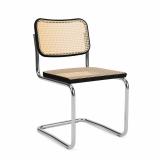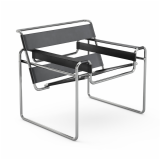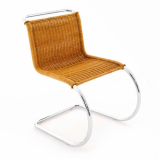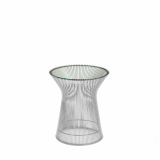The Life & Legacy of Sally Walsh
Hans Knoll's assistant is remembered for her transformation of Houston interiors
Cite Magazine, an architecture and design review of Houston, Texas, published an article, "Inside Modern Houston: The Life and Design of Sally Walsh" by Judy Kugle, on the legacy of Sally Walsh, the respected interior designer whose twenty-five year career began as Hans Knoll’s personal assistant.
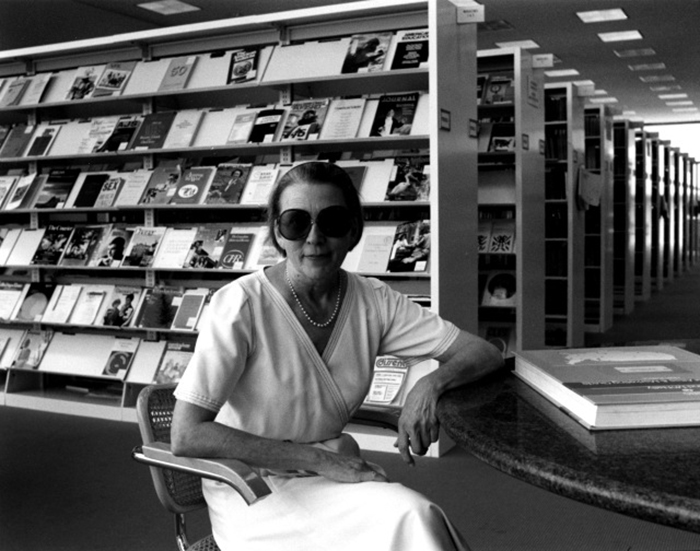
Sally Walsh in the Houston Public Library, seated in Marcel Breuer's Cesca Chair. Photograph © Houston Chronicle, 1976. Image courtesy of Museum of Fine Arts, Houston Archive. MS50-029-001. MS50.
Responsible for modernizing Houston’s commercial interiors, Walsh’s contributions have been largely overshadowed by the work of Gerald Hines, the real estate mogul credited with modernizing Houston’s architectural scene in the 1970s. Yet, as Kugle details, it was Walsh who first convinced Houston’s major corporations to embrace modernity in the late '50s. The Schlumberger offices, the Rodin exhibition at The Museum of Fine Arts, Houston and The University of Houston's Student Center Building are among her most notable works. She was also instrumental in the implementation of open-plan offices in and around Houston, Texas. In honor of her achievements, Walsh was inducted into Interior Design magazine's Hall of Fame in 1986.
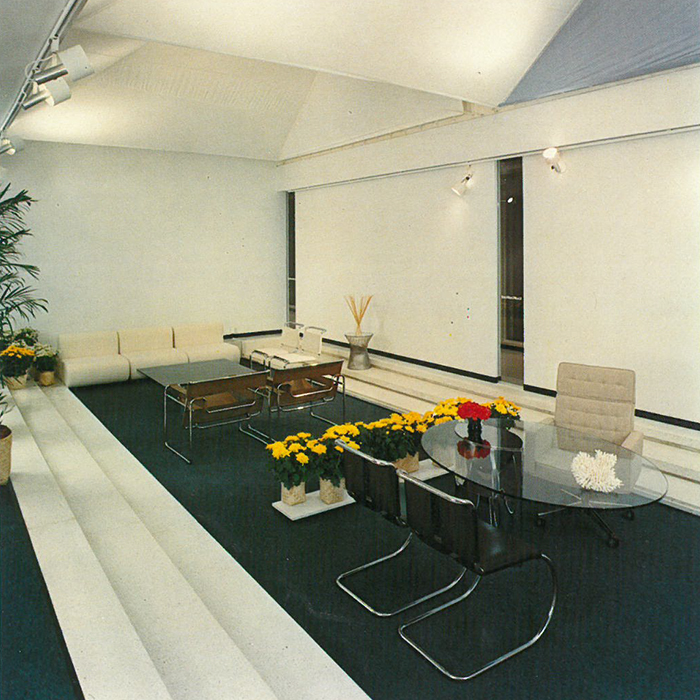
Knoll International showroom, Houston, TX, 1976 designed by Sally Walsh. Photograph from the Knoll Archives.
Featured Knoll designs: Kazuhide Takahama's Suzanne Lounge Chair and Sofa, Uffizio Tecnico's Spoleto Chair, Marcel Breuer's Wassily Chair, Warren Platner's Side Table, Ludwig Mies van der Rohe's MR Chair and Vincent Cafiero's Executive Chair.
Before coming into her design career, Walsh was a rebellious, intelligent young woman who had dropped out of the local schooling system by nineteen—she attributes her disenrollment to severe boredom. After cycling through a number of jobs, she found herself interviewing for a position at then relatively new, then decade-old furniture company founded by Hans Knoll. In her personal account, Walsh attributes her successful interview to the fact that her mother subscribed to Knoll’s catalog. The president, himself, cited two primary reasons for her hiring: “She had a blank mind and [I’d] never seen a more enchanting hat.”
Under Knoll's employ, Walsh was given innumerable tasks. She walked the dog, typed out correspondence, waited on customers, cut out fabric swatches, designed office spaces, discovered new textiles, located showroom sites, liaised with architectural firms and flew around the world for quality assurance purposes. She worked in this capacity for Hans Knoll—whom she referred to as, “The Fifth God”—for six years before resigning after becoming engaged.
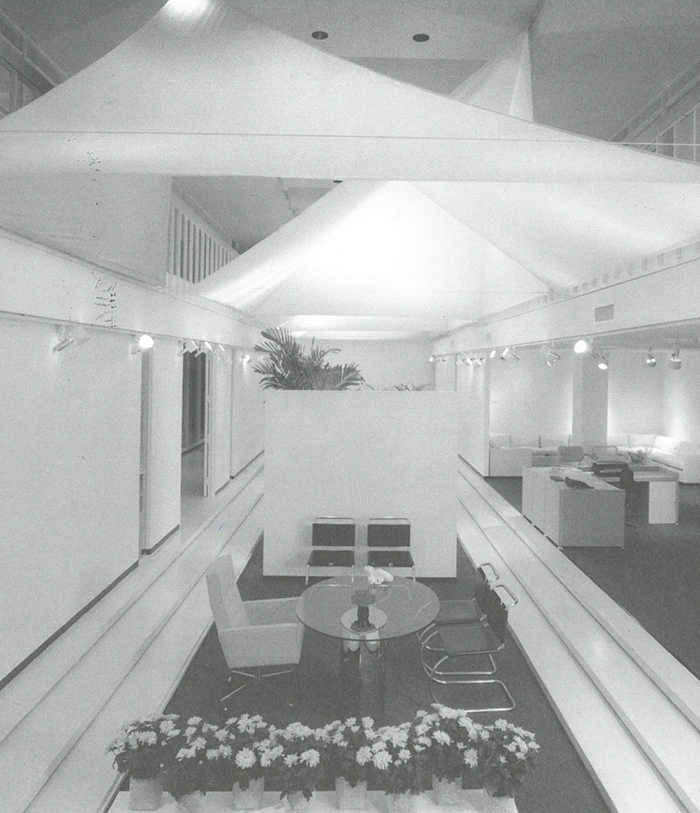
“When I walk through the Houston buildings today and find good contemporary design, whether or not I had a hand in it, I find myself taking credit … because on this specific turf it flourished with my help.”
—Sally Walsh
Knoll International showroom, Houston, TX, 1980 designed by Sally Walsh. Photograph from the Knoll Archives.
Featured Knoll designs: Vincent Cafiero's Executive Chair, Cini Boeri's Lunario Table, Uffizio Tecnico's Spoleto Chair, Ludwig Mies van der Rohe's MR Chair and Marcel Breuer's Cesca Chair.
When Walsh moved to Houston in 1955, she initially intended to open a Knoll showroom. Hans Knoll's death, caused by a car accident, put a halt to those plans. Forced to adapt, Walsh found a job at Wilson Stationary & Prints, whose services ran the gamut from selling office furniture to providing printing solutions. She took it upon herself to revitalize the company. With the acquisition of a Knoll dealership, Walsh opened the floodgates for modern furniture to enter the Houston market. Having come from New York, Walsh proved the ideal spokeswoman for the movement. Her avant-garde attire and quick-witted personality inspired many of her Houston co-workers, who strove to emulate her. Men, too, took notice of her outspokeness, remarkable in an era during which gender equality was a remote ideal.
Later in life, Walsh wrote: “When I walk through the Houston buildings today and find good contemporary design, whether or not I had a hand in it, I find myself taking credit … because on this specific turf it flourished with my help.”
In 1986, after a successful career, Walsh was diagnosed with a rare form of leukemia. She died six years later, in 1992, although Walsh continued to work up until her death.
To read the full article written by Judy Kugle, visit the Offcite Blog for purchase information on the Fall/Winter 2014 issue of Cite Magazine.























